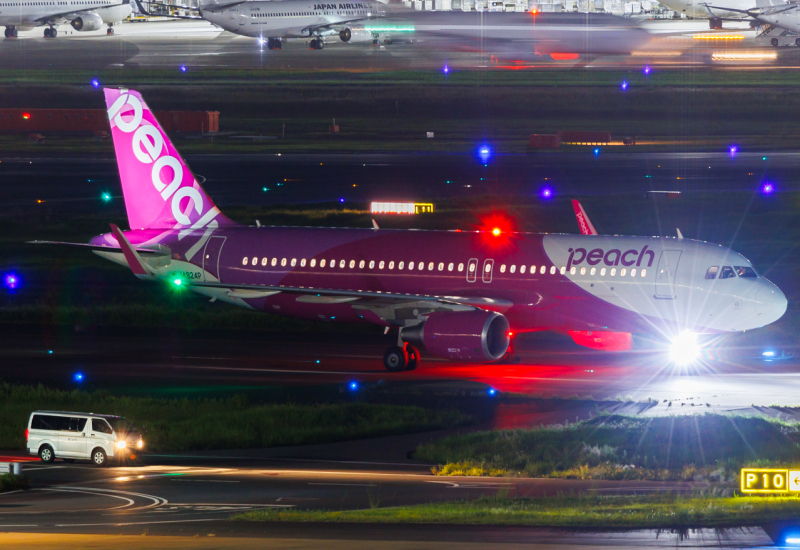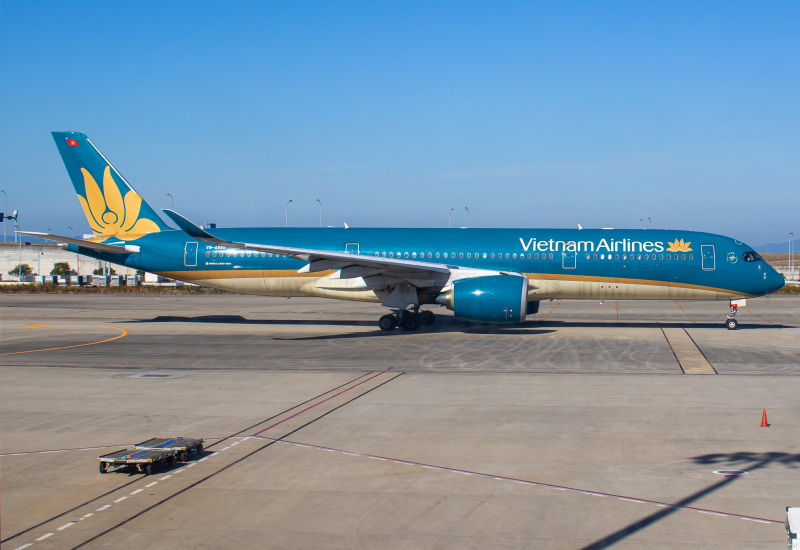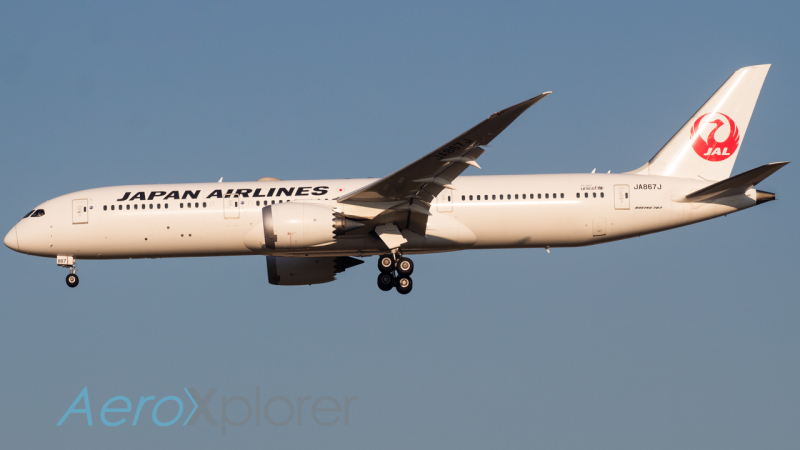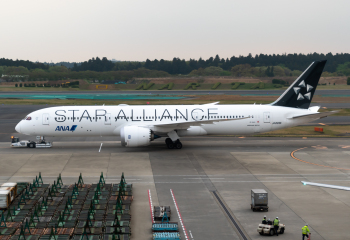Climate change, particularly rising sea levels, has placed one of the world's most unique airports at risk. Today, we will examine the case of Kansai Airport, how it is gradually sinking into the sea, and what engineers are doing to fix it.
Backstory of Osaka Kansai
Kansai International Airport (KIX) is the primary international airport serving the city of Osaka, Japan. The airport opened on September 4th, 1994 to relieve increasing congestion at Osaka Itami Airport (ITM). Currently, Osaka's Itami Airport is the region's primary domestic gateway.

When it was built, Kansai Airport was touted as one of the most unique airports in the world. The airport is one of the first airports built on an artificial island from reclaimed land.
Kansai straddles two artificial islands, the first of which covers around 510 hectares and the second which covers 545 hectares. In total, the airport covers a total of 1,055 hectares (2,600 acres).
The airport is located in Osaka Bay just off the coast of the main island on which Osaka is located. To access the airport, a 1.86-mile bridge connects the airport to Osaka and the rest of the region, including Kyoto, Kobe, etc.

The airport consists of two terminals numbered 1 and 2. Terminal 1 is 1.05 miles (1.7 kilometers) long making it the longest airport terminal in the world. Kansai serves as a passenger hub for Japanese carriers: All Nippon Airways (ANA), Japan Airlines (JAL), and low-cost airline Peach. Kansai is a major cargo hub as well, for Nippon Cargo Airlines.
Statistics-wise, Kansai Airport is the 30th-busiest airport in Asia and the third-busiest in Japan, in 2016. It served over 31 million passengers in 2019 with nonstop links as far as Toronto, Paris, and Sydney.

The airport has received numerous accolades including Skytrax awards for Best Airport Staff in Asia, World's Best Airport Staff, and World's Best Airport for Baggage Delivery.
Osaka's Sinking Airport
Kansai was built on artificial islands, so sea levels were taken into account during construction. Initially, the islands were predicted to subside over 50 years before stabilizing at 13 feet above sea level. This sea level is the minimum elevation required to prevent flooding in the event of a breach in an encircling seawall.
Within the first six years following Kansai's opening, the airport seawall was required, a project that cost at least $150 million. Unfortunately, the islands continue to gradually sink taking Kansai International Airport with them.

The sinking has affected Kansai since its construction. Work to create the airport's artificial islands began in 1987. Three years later, by 1990, the first island had already sunk 27 feet instead of 19 as projected. Furthermore, since Kansai's opening in 1994, the airport has sunk 38 feet.
As a corrective measure, engineers excavated below the passenger terminal. Construction crews inserted iron plates beneath the hydraulic jacks that the columns supporting the terminal rested on. This enabled raising the columns in stages. These measures slowed the rate of sinking but never eliminated the issue.
The airport will continue sinking but at a far slower rate. As of now, the hydraulic jacks will be readjusted every two years or whenever necessary. Each of the 900 columns present has a meter that engineers can check for any tilting.

Airport officials say that there is no official estimated life calculated for Kansai Airport. However, the airport is at an elevated risk of flooding in the event of a typhoon. If such an event were to happen, the runways and buildings could easily lie below water. In 2018, Typhoon Jebi caused the apron, ramps, and runways to flood at Osaka's Kansai Airport.
Luckily, workers have compensated for this increased risk by paving the airport runways with asphalt as opposed to concrete. Using asphalt minimizes the risk of cracks or buckles.
Engineers predict that by 2056, some sections of the two artificial islands will sink by 13 more feet, placing them at sea level. This means that various areas of the airport are sinking at different rates, posing another source of concern.
Kansai International Airport opened as an engineering marvel. While it is an incredible feat, huge sums of money continue to be poured in as last-attempt efforts to keep the airport afloat.
Comments (0)
Add Your Comment
SHARE
TAGS
INFORMATIONAL Osaka Kansai Airportsinking airportKansai AirportOsaka AirportJapanSea levelairport sinking Osaka Kansai KIXRECENTLY PUBLISHED
 Learjet Owned By Vince Neil Crashes Into Gulfstream Jet, 1 Fatality Confirmed
On February 10th, around 14:30 local time, a Learjet private jet aircraft crashed into another private jet after landing at Scottsdale Airport (SCF) in Arizona.
NEWS
READ MORE »
Learjet Owned By Vince Neil Crashes Into Gulfstream Jet, 1 Fatality Confirmed
On February 10th, around 14:30 local time, a Learjet private jet aircraft crashed into another private jet after landing at Scottsdale Airport (SCF) in Arizona.
NEWS
READ MORE »
 Seattle Plane Strike 2025: Japan Airlines and Delta Collision Raises Safety Concerns
Seattle-Tacoma International Airport saw a concerning incident on Wednesday morning when a Japan Airlines (JAL) plane clipped a parked Delta Air Lines jet while taxiing. Thankfully, no one was injured, but passengers described the collision as a frightening experience.
NEWS
READ MORE »
Seattle Plane Strike 2025: Japan Airlines and Delta Collision Raises Safety Concerns
Seattle-Tacoma International Airport saw a concerning incident on Wednesday morning when a Japan Airlines (JAL) plane clipped a parked Delta Air Lines jet while taxiing. Thankfully, no one was injured, but passengers described the collision as a frightening experience.
NEWS
READ MORE »
 Ethiopian Airlines Expands Cargo Fleet with New Boeing 777 Freighter
Ethiopian Airlines has expanded its cargo fleet with a brand-new Boeing 777 Freighter, registered as ET-BAB (MSN 68140). The aircraft was delivered directly from Boeing’s factory in Everett, Washington, USA, and landed at Addis Ababa Bole International Airport at 3:41 PM (GMT+3) on Wednesday, January 22, 2025.
NEWS
READ MORE »
Ethiopian Airlines Expands Cargo Fleet with New Boeing 777 Freighter
Ethiopian Airlines has expanded its cargo fleet with a brand-new Boeing 777 Freighter, registered as ET-BAB (MSN 68140). The aircraft was delivered directly from Boeing’s factory in Everett, Washington, USA, and landed at Addis Ababa Bole International Airport at 3:41 PM (GMT+3) on Wednesday, January 22, 2025.
NEWS
READ MORE »





